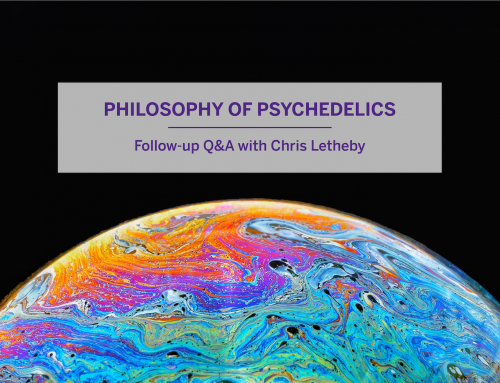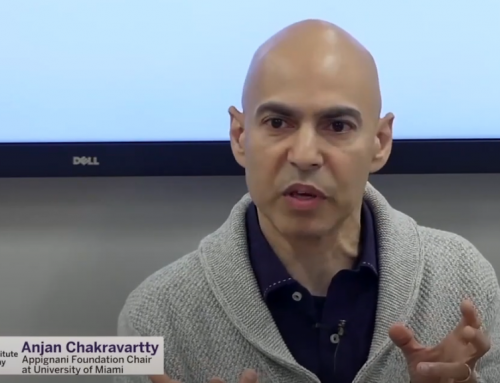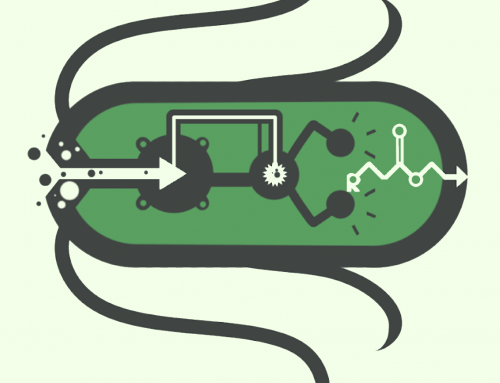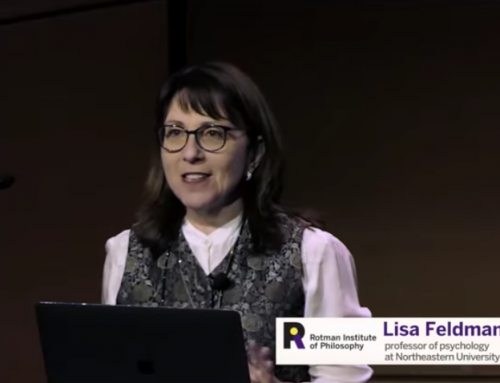Rotman graduate student, Jessey Wright, conducted the following interview with Professor Michael Anderson — Visiting Fellow at the Rotman Institute.
Professor Michael Anderson is a visiting scholar at the Rotman Institute. Professor Anderson’s work sits at the intersection of psychology, computer science and philosophy. For example, his recent book, After Phrenology: Neural Reuse and the Interactive Brain presents a novel conceptual framework for the investigation of cognition that is informed by the evolutionary context that the human brain has developed within. The book touches on topics ranging from the computational metaphors that motivate theorizing in cognitive science, the methods of cognitive neuroscience, and the importance of considering evolutionary context of the development and the embodiedness of the human brain.
Rotman Institute of Philosophy (RI): What projects do you plan to work on while visiting us here at the Rotman Institute?
Michael L. Anderson: There are three projects. I’ll start with the first.
One of the things I have been thinking about is whether the conceptual foundations of psychology might be in need of a certain amount of revision. By revision I mean reformulating the taxonomy, or the set of categories and concepts, that structure the discipline. Let me start by motivating this project a little.
Much of the work that I have done over the past decade or so has centered around the so-called neural reuse hypothesis. The primary statement of which goes something like this: each part of your brain is used and reused in different circumstances to do different cognitive tasks or support multiple different behaviours. Some of the evidence for that hypothesis comes from neuroimaging studies. If you look at all of the neuroimaging studies that show activation in a particular part of the brain you will discover that, indeed, it is active in multiple different tasks across different task categories. For example, you might find that a part of your brain is active during memory, language and mathematics tasks.
From my perspective, this makes sense evolutionarily and developmentally because the brain is composed of tissues that are very expensive in metabolic terms. To get the most efficient use of that, it makes sense that we use each piece in multiple ways and in different functional configurations. On this view, each piece of the brain will cooperate with different partners in different circumstances. That is what gives rise to complex and differential mental function.
However, there are many scientists who expect the brain to be composed of very specialized parts. For them, such as Russ Poldrack at Stanford, the observed overlaps in neuroimaging studies are something of an anomaly. One hypothesis, that I think is very interesting, is that what is going on is that we’re using a taxonomy that doesn’t match the underlying facts of psychological processes. Russ Poldrack explained this point with the following fable: Imagine that fMRI was invented during the time that psychology was dominated by phrenological thinking. The basic categories of cognition would have been faculties like inquisitiveness and impulse to propagate. If those categories were used to do neuroimaging studies, we would find that the brain responds differentially to tasks designed to produce instances of these concepts. This is what the brain does, it responds differently to anything that is different. But, if the true categories of psychology cross-cut the ones that you are using—if they are in this sense mixtures of multiple parts of the “true” categories—then any particular part of the brain will be active across multiple different categories and tasks. This is, in fact, what we observe in neuroimaging research with our current categories. One hypothesis to explain the overlaps that we are seeing is not that it’s an evolutionary strategy for getting efficient operation out of a metabolically expensive organ, but that we’re just using a set of categories that cross-cut the true categories of the mind.
I think that is an interesting hypothesis in its own right that is worth exploring. I like projects that have both philosophical and empirical elements to it. This project certainly has both of those dimensions. You can look at things empirically by trying to use neuroimaging data to query the categories of psychology and see if you can come up with different categories. For example, one finding in my empirical work is that if you do a pattern analysis, specifically a form of factor analysis, over lots of neuroimaging studies, you see that the categories that cause the brain to show similar patterns of activity do indeed crosscut those categories. One simple finding is that when you look at the patterns of brain activity during tasks that involve humour, including both jokes and funny videos, the patterns of activity look a lot more like semantics tasks than emotional tasks. Even though we tend to think of humour as an emotional experience, brain activity during a humour tasks looks more like that during a task involving linguistic meaning than it does in other emotion tasks. This is interesting as it shows that it is possible to use neuroimaging data to push the categories of psychology around. It also shows that it is possible to push the categories of folk psychology around. Philosophically, this project raises all sorts of questions. What does this say about the autonomy of psychology from the neurosciences? Should that autonomy be maintained, and how? Should scientific research be in the business of changing people’s self-images?
RI: You are organizing a workshop here in April titled “Rethinking the Taxonomy of Psychology”, which is part of this project. How do you see this workshop helping to tackle these problems?
MA: First of all, just bringing people together to talk about it is an important first step. This work is being pursued in a number of labs, and that calls for philosophical, sociological, empirical and other kinds of reflection. The main thing is to bring a whole bunch of different people with different perspectives together to talk about these issues. The people coming include Russ Poldrack, from psychology at Stanford, Robyn Bluhm who is a philosopher at Michigan State, Owen Whooley who is a sociologist at the University of Mexico that has worked on categories of mental illness, and a number of other psychologists and philosophers.
The hope is not only to get more people interested in the issues, but also to make progress during the course of the weekend and spur some collaborations going forward. I don’t think this issue is going to go away. Neuroscientific data is being produced at an ever more rapid pace, and so getting a handle on what it all means is not going to stop being relevant.
RI: That’s a nice overview of one of the projects you are working on, but you had mentioned there were three. Can you tell us about the second one?
MA: The second one is also both philosophical and empirical. While I don’t think it will make the neural overlaps go away, because I think that’s a fundamental operating principle of the brain, I do believe that the taxonomy of psychology is in need of revision, because of two facts about cognitive psychology. The first is that cognitive psychology was heavily influenced by computer science and artificial intelligence and influenced almost not all by biology. In fact, that was intentional. Biology was regarded as merely implementation details, and so evolutionary biology and neuroscience were to be autonomous from cognitive psychology. I think that the observed mismatch between the findings of neuroscience and categories of cognitive psychology is evidence that this starting point for the study of the mind was a mistake. Especially if we want to provide a holistic story of humans as evolved, biological and minded organisms. The bet that I’m placing is that rather than the representation rich vocabulary that we used now, largely based on a computer metaphor for the mind, I think that we’ll be better with psychological categories centered around affordances. I don’t know that I’m right, but that’s where I am heading.
Affordances are perceivable relationships between organisms and environments. In perceiving an affordance, what you are seeing is what you can do in your environment. So, a simple example is that, for humans, chairs afford sitting. When you perceive affordances you are perceiving what actions are available for you in any given environment.
This is a very long term project, but I think that a psychology which puts affordances at its center, over beliefs desires and intentions, is likely to give a more complete picture of humans as minded animals. That’s the background for the second project. The second project is, actually, inspired by some work here at the Brain and Mind Institute.
Jody Culham has been doing neuroimaging experiments with real objects. Most neuroimaging experiments use pictures of objects. She thought this might be less ecologically valid than experimenting with real objects, and so devised a way to do neuroimaging studies with actual real objects. Not surprisingly in retrospect, brain patterns look different with real objects than with pictures of those same objects. In particular, there is a signature finding that when you repeat a stimulus you get a repetition suppression effect. That is, the response of the brain lowers with the repeated presentation of the same image. With real objects, you don’t see this effect. The neural activity remains as robust on repeated presentations as it is on the first one. (http://www.nature.com/articles/srep00130?message-global=remove) The question is, why? She hypothesizes that the affordances are more salient with real objects than images. This makes sense because one of the things you wouldn’t want to attenuate to would be the affordances in your environment because you might want to act on them. To my knowledge, she has not tested this hypothesis.
So, with some students of mine, I have devised an experiment to test this hypothesis. There are three conditions, names of objects, pictures of objects and the objects themselves. We do a simple classification task where we give people three objects and ask them to arrange them on a table so that the things that are more similar are closer together and less similar are farther apart. Then, we take a picture of the arrangement and that gives us a similarity matrix. The distances between things tell you how similar people judge them to be. The first pass, which we are analyzing right now, is just to see if the conditions are indeed different. If so, we’ll look to see if the pictures are more like the words or objects. I expect them to be more like the words, but we’ll see.
The reason for collecting data in this way is because, once you have similarity matrices, you can do multidimensional scaling on them. The technique is, itself, complex, but the idea is simple. If I give you two objects and tell you that they are 30 cm apart, there are all sorts of ways that those objects can be arranged and that will be true. If I give you a third object and tell you that it is 10cm from one of the first two, and 22cm from the other, suddenly you have a constraint. Now there are fewer ways those objects can be arranged. As you start piling on measurements, you start building a space with fewer and fewer possible configurations. So, we will have 9 objects and all the distances between them, and can determine the shape of the similarity space that they are arranged in. If you can get a sense of the similarity space, you can also get a sense of the dimensions that people are using to make these judgements. Is it size, weight, function? We aim to find out if some of the dimensions that people use are affordances.
If we do get results of the sort I hope, then we can do the same thing, assuming that Jody Culham is interested, with the patterns of brain activity. That would be very cool to compare pattern in the similarity judgements to the brain patterns and see what we get.
RI: That covers two of your projects. What about the third project? What motivates it and, well, what is it?
MA: The third project has to do with understanding function-structure relationships in the brain. It is probably the most philosophical of the projects.
The leading theories for how function emerges from structure in philosophy of neuroscience are mechanistic, such as the work of Carl Craver. The idea is that biological organs are mechanisms composed of parts that interact in the right ways to give you overall function. I believe that I have found more than one instance of structures in the brain that can’t be well explained via mechanistic explanations as Craver defines them.
One is found in the mammalian retina. There is a neural cell in the retina called a starburst amacrine cell. These cells are very cool. They only have dendrites, and no axons. But, the dendrites can release neurotransmitters so they act like a dendrite-axon hybrid in that they both receive and release neurotransmitters. They are called starburst because there is a central body that the dendrites are arrayed all around like a star. They are involved in motion perception. The cell releases neurotransmitter from the dendrites aligned with the direction of motion being perceived. So it looks like a nice bottom up mechanistic explanation: you have individual components in each dendrite that allow it to respond to motion in its preferred direction. But, in fact, the way these cells have function has to do with the overall structure of the network. The spatial properties of the retina are such that the overlapping dendrites are mutually inhibiting. You have to give a top down explanation to make sense of the function. The overall structure of the network constrains the parts, which is the reverse of what you expect from a characteristically mechanistic explanation.
I’m trying to think about explanations in terms of mutual constraint between structures that determine function instead of parts of mechanisms that determine function. I’m wondering if a story of function-structure relationships rooted around mutual constraint might be a better fit for the brain. This goes back to the idea of neural reuse. If neurons are multifunctional, it is none-the-less the case that, in a moment, they do a specific thing. So, it has to be the case that functions can be selected in order to give rise to coherent behaviour. That looks like a constraint to me. The idea is that interacting elements of the brain mutually constrain one another, and so select from among its functions by suppressing the rest of them.
I hope to get a conceptual handle on what that would look like, and determine if that is a plausible theory of brain function.
RI: Those are all very interesting projects and I hope you make a lot of progress on all of them. Are there any other challenges or questions facing cognitive science or neuroscience that you think philosophers might specifically be able to contribute to?
MA: There are a lot of people in cognitive science doing a lot of different work. Neuroimaging, behavioural, animal research, to name a few. There are very few people whose job it is to make all of that coherent. I think that scientifically trained philosophers are especially well placed to think about whether a coherent picture is emerging, and if it isn’t where the gaps are. Are they methodological? Are people in different sub-disciplines asking different kinds of questions? How is it that the methods different across various sub-fields of the cognitive sciences? What are the strengths and weakness of differences in method?
I also think the metaphors that cognitive scientists use change and are different in different subfields. I think one question deserving of significant reflection is this: how do those metaphors influence and limit the way that scientists interpret their data?
RI: What advice would you give to philosophy graduate students interested in these kinds of issues within the cognitive sciences? What expertise should they cultivate? How should they use their training to interact productively with scientists?
MA: First of all, get into a lab. Volunteer in a lab. You should understand, and not just theoretically but practically – running experiments, analyzing data and see what scientists actually do. The more familiar you are with that the better it will be for your own work, and the more helpful you can be for scientists. That’s probably the most important thing.
I also think that all philosophers of science should know how to analyze data. There are so many hidden, or unconscious steps in data analysis. There are so many “rules” that are never made explicit, that are just practices. This isn’t necessarily a bad thing, but it’s something that you will never notice unless you are part of the process of analyzing data in the science you are reflecting on.
The other thing, which is more career advice, is that you should try to publish in science journals. It probably can’t be your main thing, but the fact is that philosophers read everything and scientists only read science. If you are doing work you think would be useful to scientists, the only way they will see it is if it ends up in a science journal. Whether that is through collaboration, or on your own, you should definitely try to publish in science journals. Your impact will be broader and you’ll be forced to express things in a different way.
RI: Is there anything else you wanted to say?
MA: Just that I’m really excited to be here. Between Rotman and the Brain and Mind Institute this is a really exciting place to be. There aren’t that many philosophy programs that are as hospitable to interdisciplinary philosophical and scientific projects as Rotman is. There are others but such programs are rare. My work is a weird hybrid of philosophy, neuroscience and computer science. There aren’t many places in the world that I can fit into professionally. Rotman is one of those places. That is reinforced by the strong ties with the Brain and Mind Institute. I’m looking forward to diving in and getting to know the people here.






